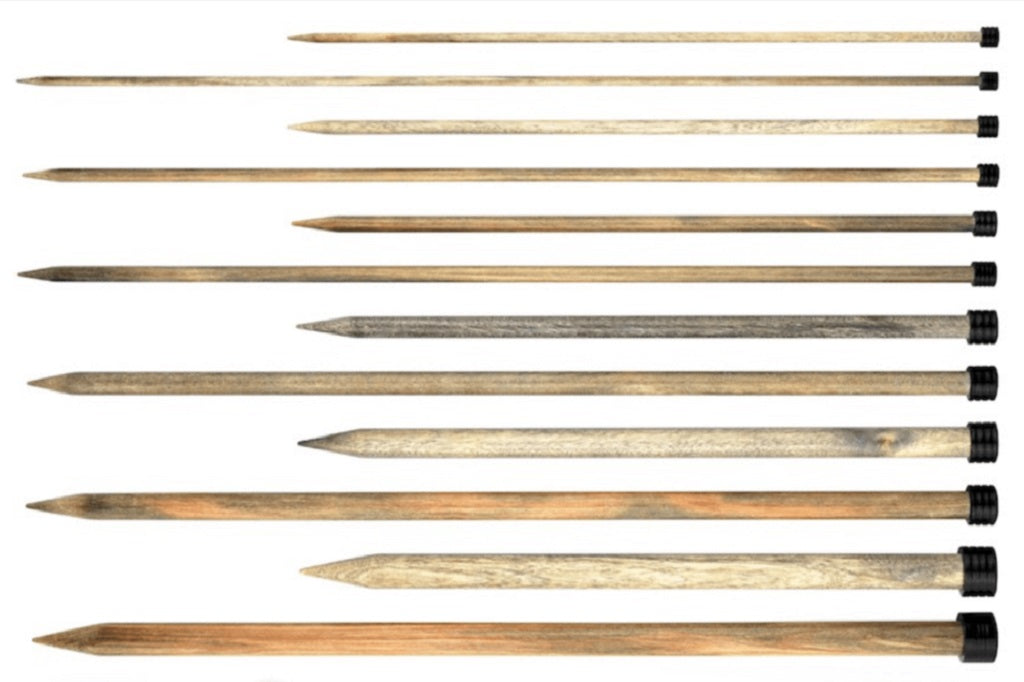Owain Glyndŵr Day, 16th September
Owain Glyndŵr - the last Welsh Prince of Wales
Owain ap Gruffydd, or Owain Glyndŵr, 1350 - 1416, is arguably one of the greatest Welshmen of all time if not the greatest. He sacrificed everything for a dream of Wales as a nation with its own self-governing churches, universities and most importantly, a parliament. None less than the respected Sunday Times newspaper listed the most influential world figures of the last millennium in all fields. It ranked Owain Glyndŵr seventh, above such eminent figures as Sir Isaac Newton and Abraham Lincoln!!!
Owain Glyndŵr was the last Welsh person to hold the title Prince of Wales and in 1404 formed the first Senedd (a Welsh Parliament). September 16th is now celebrated annually as Owain Glyndŵr Day.
- Owain Glyndŵr - Summary (less than 500 words)
- Owain Glyndŵr - the last Welsh Prince of Wales (less than 1,000 words)
- Owain Glyndŵr - the last Welsh Prince of Wales (over 2,000 words)
- The Historic Pennal Letter (approx 1,800 words)
Light a Candle for Owain Glyndŵr
Remember a great Welsh man, Owain Glyndŵr on 16th September by lighting a candle.
Owain Glyndŵr - Summary
(less than 500 words)
Owain ap Gruffydd, or Owain Glyndŵr, 1350 - 1416, is arguably one of the greatest Welshmen of all time if not the greatest. He sacrificed everything for a dream of Wales as a nation with its own self-governing churches, universities and most importantly, a parliament. None less than the respected Sunday Times newspaper listed the most influential world figures of the last millennium in all fields. It ranked Owain Glyndŵr seventh, above such eminent figures as Sir Isaac Newton and Abraham Lincoln!!! In more recent times, the 16th of September has become Owain Glyndŵr Day, an unofficial holiday in Wales. Owain Glyndŵr Day is a celebration of Owain Glyndŵr, the last native Prince of Wales and founder of the first Welsh parliament. (Read more at BBC Archive)
Owain Glyndŵr Day, celebrated annually each September 16th, commemorates the proclamation of Owain Glyndŵr as Prince of Wales in 1400, marking a significant moment in Welsh history. Glyndŵr, the last Welshman to hold this title, remains a symbol of national pride and resistance against English rule. His legacy, which has been reevaluated and celebrated over the centuries, especially from the 19th century onwards, has grown into a symbol of Welsh identity and independence.
Glyndŵr, born around 1350, was a natural leader and a descendant of prominent Welsh dynasties, including the princes of Powys and Deheubarth. He was raised in a noble family during a time of relative peace between Wales and England. His early military career included service under Sir Gregory Sais on the English-Scottish border and participation in Richard II's Scottish War. Glyndŵr also studied law in London, which was likely influenced by his father-in-law, Sir David Hammer, an English judge.
On September 16th, 1400, Glyndŵr was proclaimed Prince of Wales by his followers, sparking a revolt against the English crown. His initial grievances with Reginald de Grey of Ruthin over land disputes escalated into a full-scale war. Glyndŵr's revolt quickly gained momentum, with Welshmen from all walks of life rallying behind him. By 1403, nearly the entire country was united under his leadership, and in 1404, he was formally crowned Prince of Wales at a parliament in Machynlleth.

Despite these early successes, the rebellion began to falter by 1408. Glyndŵr's forces suffered significant losses, and by 1410, he had become a fugitive, with his home destroyed and his family captured. Although substantial rewards were offered for his capture, Glyndŵr was never betrayed, and his place of hiding remains unknown. He likely spent his final years in Herefordshire, possibly as a chaplain on his daughter's estate. Owain Glyndŵr died around 1416, with his exact burial place still a mystery.
Owain Glyndŵr's legacy lives on in Wales today. His name and achievements are celebrated in various forms, including statues, monuments, and the naming of institutions like Glyndŵr University. The Owain Glyndŵr flag, often flown alongside the Welsh Dragon Flag, is a popular symbol of Welsh pride. The statue of Glyndŵr in Corwen, created in 2007, stands as a testament to his enduring impact on Welsh culture and identity.
Glyndŵr's vision of an independent Wales, though ultimately unrealised, has left a lasting mark on the nation's history. His life and legacy continue to inspire a sense of national pride and a celebration of Welsh heritage. Owain Glyndŵr Day serves as an annual reminder of his contributions and the enduring spirit of Welsh resistance against external domination.
Light a Candle for Owain Glyndŵr
Remember a great Welsh man, Owain Glyndŵr on 16th September by lighting a candle.
Owain Glyndŵr - the Last Welsh Prince of Wales
(the Short Version less than 1000 words)
Owain ap Gruffydd, or Owain Glyndŵr, 1350 - 1416, is arguably one of the greatest Welshmen of all time if not the greatest. He sacrificed everything for a dream of Wales as a nation with its own self-governing churches, universities and most importantly, a parliament. None less than the respected Sunday Times newspaper listed the most influential world figures of the last millennium in all fields. It ranked Owain Glyndŵr seventh, above such eminent figures as Sir Isaac Newton and Abraham Lincoln!!! In more recent times, the 16th of September has become Owain Glyndŵr Day, an unofficial holiday in Wales. Owain Glyndŵr Day is a celebration of Owain Glyndŵr, the last native Prince of Wales and founder of the first Welsh parliament. (Read more at BBC Archive)
Owain Glyndŵr Day, observed on September 16th, commemorates the proclamation of Owain Glyndŵr as Prince of Wales in 1400, marking a pivotal moment in Welsh history. This day, celebrated annually in Wales, honours Glyndŵr, who is regarded as a national hero and the last Welshman to hold the title of Prince of Wales. His life and legacy, though over 600 years old, continue to inspire pride in Welsh identity and independence.
Owain Glyndŵr’s Legacy and Influence
Owain Glyndŵr, born around 1350, is considered one of the greatest Welsh figures of all time. His dream of an independent Wales, self-governed with its own parliament, churches, and universities, led him to sacrifice everything for his cause. His vision and leadership are celebrated each year on the anniversary of his proclamation as Prince of Wales. Glyndŵr’s influence extends beyond history; he is a symbol of Welsh pride and freedom. He was ranked seventh in The Sunday Times' list of the most influential world figures of the last millennium, highlighting his lasting impact.
Glyndŵr's legacy is also reflected in modern Wales. He is revered not only by the nationalist movement but also in broader Welsh culture. Statues, monuments, and even pub and street names across Wales honour his memory. A university has been named after him, and a semi-professional rugby team, Rygbi Gogledd Cymru (RGC 1404), takes its name from the year Glyndŵr was proclaimed Prince of Wales in Machynlleth.
The Owain Glyndŵr Flag and Statue
The Owain Glyndŵr flag is a popular symbol in Wales, often flown alongside the Welsh Dragon Flag. A life-size bronze statue of Glyndŵr, created in 2007 by Colin Spofforth, stands in Corwen, depicting him on horseback in battle uniform, embodying the heroic image of the Welsh leader.Early Life and Lineage
Owain Glyndŵr was born into a noble family of Anglo-Welsh nobility around 1350, though the exact location and date of his birth remain uncertain. His most likely birthplace is either Sycharth, near Oswestry, or Trefgarn in Pembrokeshire. His family had estates in Sycharth, Iscoed in the Teifi Valley, and Glyndyfrdwy in the Dee Valley, where Glyndŵr spent much of his childhood.His lineage was impeccable, tracing back to prominent Welsh dynasties. On his father's side, Glyndŵr descended from Bleddyn ap Cynfyn, ruler of Powys in the 11th century, while his mother's lineage included Rhys ap Tewdwr, Prince of Deheubarth in the late 11th century. This ancestry was significant in the 14th century, adding to Glyndŵr's stature and claim as a leader of Wales.
Military Career and Legal Studies
Glyndŵr's military career began in 1384, serving under Sir Gregory Sais on the English - Scottish border. He participated in Richard II's Scottish War in 1385 and fought in the Battle of Cadzand in 1387, though he was notably not knighted despite his contributions. In the 1380s and 1390s, Glyndŵr studied law at the Inns of Court in London, a decision likely influenced by his father-in-law, Sir David Hammer, an English judge who had settled in Wales. This legal training and his noble heritage equipped Glyndŵr with the skills and connections that would later prove vital in his rebellion against English rule.
Proclamation as Prince of Wales and the Revolt
On September 16th, 1400, Owain Glyndŵr was proclaimed Prince of Wales by his followers, sparking one of the most dramatic episodes in Welsh history. The revolt began with a dispute over common land with Reginald de Grey of Ruthin, but quickly escalated into a full-scale war against the English crown. Glyndŵr’s forces destroyed the town of Ruthin and attacked towns across northeast Wales, drawing widespread support from Welshmen of all backgrounds. By 1403, nearly all of Wales was united behind Glyndŵr, and the dream of an independent Wales seemed within reach.
Despite early victories and Glyndŵr's formal coronation as Prince of Wales in 1404, the rebellion ultimately failed. By 1408, the revolt had lost momentum, and by 1410, Glyndŵr had become a fugitive. His family was captured, and his home was destroyed, leaving him with little more than his shattered reputation and the remnants of his once-promising vision.
Later Years and Death
Owain Glyndŵr’s final years were marked by decline and obscurity. After the rebellion’s collapse, he became a hunted outlaw, with substantial rewards offered for his capture. However, he was never betrayed or captured, and his whereabouts remained a mystery. It is believed that he spent his last years in Herefordshire, near the manor of his son-in-law, Sir John Scudamore, the high sheriff of Herefordshire. Glyndŵr died around 1416, ironically in England, and the location of his grave remains unknown. Following the final battles of the revolt in 1412, little is known about Glyndŵr's activities. Sporadic violence against the English continued, but it was carried out by bandits and outlaws rather than an organized military force. One theory suggests that Glyndŵr ended his life as the family chaplain on his daughter Alys' estate, where she lived with her husband, Sir Henry Scudamore, the sheriff of Herefordshire. Glyndŵr died in 1415 at approximately 56 years old, leaving behind a legacy that continues to inspire Welsh national identity and pride.
Conclusion
Owain Glyndŵr remains a towering figure in Welsh history, celebrated for his vision of an independent Wales and his role as a national leader. His legacy is honoured each year on Owain Glyndŵr Day, a testament to his enduring influence on Welsh culture and identity. Although his rebellion ultimately failed, Glyndŵr's dream of a self-governed Wales lives on in the hearts of the Welsh people, making him a symbol of pride, freedom, and resilience.
Light a Candle for Owain Glyndŵr
Remember a great Welsh man, Owain Glyndŵr on 16th September by lighting a candle.
Owain Glyndŵr - the Last Prince of Wales
(The long version over 2000 words)
Owain Glyndŵr Day 16th September - Diwrnod Owain Glyndŵr
Owain ap Gruffydd, or Owain Glyndŵr, 1350 - 1416, is arguably one of the greatest Welshmen of all time if not the greatest. He sacrificed everything for a dream of Wales as a nation with its own self-governing churches, universities and most importantly, a parliament. None less than the respected Sunday Times newspaper listed the most influential world figures of the last millennium in all fields. It ranked Owain Glyndŵr seventh, above such eminent figures as Sir Isaac Newton and Abraham Lincoln!!! In more recent times, the 16th of September has become Owain Glyndŵr Day, an unofficial holiday in Wales. Owain Glyndŵr Day is a celebration of Owain Glyndŵr, the last native Prince of Wales and founder of the first Welsh parliament. (Read more at BBC Archive)
September 16th is the anniversary of the proclamation in 1400, of Owain Glyndŵr as Prince of Wales and is now celebrated annually as Owain Glyndŵr Day. In more recent times, the 16th of September has become an unofficial holiday in Wales. It celebrates a national hero of Wales who was the last Welshman to hold the title Prince of Wales. Many considered him an unofficial king of Wales.
Owain Glyndŵr lived over 600 years ago and yet today remains one of the most heroic figures in Welsh history. In the 19th century his life and legacy were beginning to be re-evaluated as the Welsh 'nation' began to find its voice once more. The discovery of his seal and letters were proof that he was a national leader of some importance - a learned head of a country with diplomatic ties as any other head of state might have. His vision and leadership of Wales is celebrated on 16th September each year and it is the anniversary of Glyndŵr being named the Prince of Wales in 1400, which sparked his stand against the English crown.
Owain Glyndwr - A Vision for Wales
Owain Glyndwr, 1350 - 1416, is arguably one of the greatest Welshmen of all time if not the greatest. He sacrificed everything for a dream of Wales as a nation, governing itself with its own self-governing churches, parliament and universities. Owain Glyndŵr was the last Welsh person to hold the title Prince of Wales. His name is still remembered and revered today.
The name of Owain Glyndŵr (often written in anglicised versions as Owen Glyndower or even Glendower) has, over the years, become a symbol of pride and freedom not only in history but also in modern times. None less than the respected Sunday Times itself, in its list of the most influential world figures of the last millennium in all fields, chose to rank Owain Glyndŵr seventh. It ranked Owain Glyndŵr seventh, above such eminent figures as Sir Isaac Newton and Abraham Lincoln!!! (Read more at BBC Archive)
Owain Glyndŵr- Influence Today
The nationalist movement in Wales has always held Owain Glyndŵr in high regard, but he is now a figure of mass culture in Wales, with statues and monuments alongside pub and street names commemorating him. Wales has established a Glyndŵr University and a semi-professional rugby team in north Wales is known as Rygbi Gogledd Cymru (RGC) 1404 - the 1404 referring to the date that Glyndŵr was proclaimed Prince of Wales in Machynlleth.
Owain Glyndŵr Flag and Statue
The Owain Glyndŵr flag is a popular flag in Wales and is flown, often side by side with the Welsh Dragon Flag all over Wales. There is a life-size bronze Owain Glyndŵrstatu in the square at Corwen. Created in 2007 by Colin Spofforth and standing on an eight-ton plinth, it shows the great leader on his horse in battle uniform. This statue is fast becoming an iconic national Welsh treasure - (the Sculpturer Colin Spofforth).
Owain Glyndŵr Statue in Corwen and Flag
Owain Glyndŵr - Early Years
A Natural Leader
Owain was a natural leader, but he also became an astute statesman who united many warring Welsh factions and then led in to battle against the English rulers. However, in some senses Owain was the spark that ignited the Welsh discontent about specific issues in Wales, many dating from the death of Llywelyn the Last, who was killed in 1282. The son of Gruffudd ap Llywelyn Fawr and grandson of Llywelyn the Great, he was the last sovereign Prince of Wales before its conquest by Edward I of England.
Born into a Noble family
He was born into a powerful family of the Anglo-Welsh nobility, during a time of relative peace between the tribes of Wales and the English aristocracy. There are no definitive records of the birthplace of Owain Glyndŵr and there is some uncertainty on when he was born. However, it is likely that his birth was about 1350, maybe plus or minus a few years! The two most likely birthplaces are the family home at Sycharth, near Oswestry, or in Trefgarn, Pembrokeshire where one story says that his mother was visiting at the time of his birth. Owain’s family had estates at Sycharth, Iscoed in the Teifi Valley, and Glyndyfrdwy, in the Dee Valley. Iscoed was inherited by his mother, Elen, whilst Glyndyfrdwy was described as a ‘fine lodge in the park.’ He probably spent much of his childhood at the family home of Sycharth.
Lineage of Owain Glyndŵr
His lineage, a vitally important factor to Welsh people in the fourteenth century, was impeccable. When Owain Lawgoch was killed by an English assassin in 1378, the male line of the Gwynedd dynasty, which had led the resistance against the Anglo-Norman invaders since the 11th century, ended. Owain claimed direct descent from the two other major Welsh dynasties, the princes of Powys in Mid Wales and Deheubarth in South-West Wales. On his father’s side, he could trace his ancestry back to Bleddyn ap Cynfyn, ruler of Powys in the eleventh century, while his mother’s lineage stretched back to Rhys ap Tewdwr, Prince of Deheubarth in the late eleventh century.
Military Career
Owain Glyndŵr’s military career began in 1384, when he served under the renowned military leader, Sir Gregory Sais, on garrison duty on the English-Scottish border. Following this, in 1385 he fought in Richard II's Scottish War, probably under Richard Fitzalan the Earl of Arundel. He also took part in Battle of Cadzand of 1387 when a Franco-Flemish fleet was routed. Following the battle, a number of Arundel's squires were knighted; noticeably Glyndŵr was not one of them.
Studying Law in London
In the 1380s and 1390s Glyndŵr studied law at the Inns of Court in London. This decision was almost certainly prompted by his father in law, Sir David Hammer, an English judge who settled in Wales following his marriage to Angharad, the daughter of Llywelyn Ddu ap Gruffudd ab Iorwerth Foel, one of the most prominent Welshmen in nearby Chirkland. One of their holdings was the village of Hammer, which they took as the family name, and Owain was married in the village church to David's daughter Marred.
Owain Glyndŵr Proclaimed Prince of Wales
On 16th September 1400, Owain Glyndŵr embarked on a course of action that would become one of the most dramatic episodes in Welsh history. His longstanding quarrel with Reginald de Grey of Ruthin over some common land took a surprising turn when, after being proclaimed Prince of Wales by his followers, Owain marched on Ruthin.
After destroying the town, Owain went on to attack towns all over north-east Wales as the revolt turned into a full-scale war with the English crown. Welshmen from all walks of life flocked to join Owain's cause, and by 1403 nearly the whole of Wales was united behind Glyndŵr. For a while, it seemed that the vision of an independent Wales had not died with Llywelyn ap Gruffudd in 1282 after all.
Later Years
However, despite these astounding early victories and the formal coronation of Owain Glyndŵr as Prince of Wales at the parliament of 1404, the rebellion would ultimately fail. By 1408, the revolt was dwindling as swiftly as it had swept into being by 1410, its inspirational leader had become a fugitive, his career and his reputation shattered, his home and his family destroyed. His wife and children were captured, and by 1410 he had become a hunted outlaw.
He is believed to have spent his last years in Herefordshire near the manor of his son-in-law, Sir John Scudamore, the high sheriff of Herefordshire. Despite the substantial rewards being offered, Owen was never captured or betrayed, and his place of hiding remains a mystery to this day. He died in or around 1416, ironically in England. The location of his grave is unknown.
Final Years
After the final battles of the revolt in 1412, little is known of Owain Glyndŵr. Flashes of sporadic violence against the English continued, but by bandits and outlets rather than any semblance of an organised military force.
One theory is that he ended his life as the family chaplain on his daughter Alys' estate she shared with her husband, Sir Henry Scudamore, the sheriff of Herefordshire. He died in 1415 aged approximately 56.
About FelinFach
Located in Pembrokeshire Wales, our ethos is defined in the three words...
NATURAL TRADITIONAL HANDMADE.
- Hand woven iconic Welsh blankets.
- Hand dyed yarn, dyed with natural dyes only - no exceptions!
- Hand poured candles, candle accessories, Candle Making Workshops and soapery.
- Natural Dyeing Craft courses.
- Yarn shop, yarn bowls, project bags, tools and accessories for knitters and crafters.
- Welsh Gifts, made in Wales, handmade in Wales.
We are a proud supporter of Americymru the Campaign for Wool, Global Welsh and Red Dragon America.
Other FelinFach Pages
Last updated 5th September 2024
Light a Candle for Owain Glyndŵr
Remember a great Welsh man, Owain Glyndŵr on 16th September by lighting a candle.
The Historic Pennal Letter
Owain Glyndŵr allies with the King of France against England
The Pennal (named after the village where it was written) Letter was originally written in Latin in 1406. It was Owain's attempt to strengthen his cause by allying himself with the French King, Charles VI. In exchange, Owain pledged his allegiance to Pope Benedict XIII of Avignon. At this time, the Papacy was divided; Charles VI sided with Avignon, while Henry IV of England remained allied to the Pope in Rome. Thus, Owain was making clear both his rejection of English rule and his position as Prince of Wales. In the letter, he lays out his plans for establishing a Welsh Church and two Welsh universities, thus portraying a vision of a strong and autonomous Wales.
The Pennal letter, held in the National Archives of France and is in two parts: in the first, Owain declares his intention to give obedience to the pope of Avignon; the second is a formal document, endorsed with his great seal, setting out the terms of that allegiance and detailing the schism in the papacy.
Pennal Letter Translation
This English translation is taken from Matthews 1910.
Pennal Letter (Part One)
Most serene prince, you have deemed it worthy on the humble recommendation sent, to learn how my nation, for many years now elapsed, has been oppressed by the fury of the barbarous Saxons; whence because they had the government over us, and indeed, on account of the fact itself, it seemed reasonable with them to trample upon us. But now, most serene prince, you have in many ways, from your innate goodness, informed me and my subjects very clearly and graciously concerning the recognition of the true Vicar of Christ. I, in truth, rejoice with a full heart on account of that information of your excellency, and because, inasmuch from this information, I understood that the Lord Benedict, the supreme pontifex intends to work for the promotion of a union in the Church of God with all his possible strength. Confident indeed in his right and intending to agree with you as indeed as far as it is possible for me, I recognise him as the true Vicar of Christ, on my own behalf, and on behalf of my subjects by these letters patent, foreseeing them by the bearer of their communications in your majesty's presence. And because, most excellent prince, the metropolitan church of St. David was, as it appears, violently compelled by the barbarous fury of those reigning in this country, to obey the church of Canterbury, ad de facto still remains in the subject of this subjection. Many other disabilities are known to have been suffered by the Church of Wales through these barbarians, which for the greater part are set forth full in the letter patent accompanying. I pray and sincerely beseech your majesty to have these letters sent to my lord, the supreme pontifex, that as you deemed worthy to raise us out of darkness into light, similarly you will wish to extirpate and remove violence and oppression from the church and from my subjects, as you are well able to. And may the Son of the Glorious Virgin long preserve your majesty in the promised prosperity.
Dated at Pennal the last day of March (1406)
Yours avowedly
Owen, Prince of Wales.
Endorsement: To the most serene and most illustrious prince, lord Charles, by the grace of God, King of France.
Pennal Letter (Part Two)
To the most illustrious prince, the lord Charles, by the grace of God, King of the French, Owen by the same grace, sends the reverence due to such a prince with honour. Be it known to your excellency that we have received from you the articles following, brought to us by Hugh Eddowyer, of the Order of Predicants, and Morris Kery, our friends and envoys, on the eighth day of March, A.D. 1406, the form and tenor of which follow:
In the first place they express the cordial greeting on the part of our lord the king, and of his present letter to our said lord the prince. In this manner, our lord the king greatly desires to know of his good state and the happy issue of their negotiations. He requests Owen, that he will write as often as an opportunity offers, as he will receive great pleasure, and he will inform him, at length, concerning the good state of the said lord, the king, of the queen, their children, and of the other lords, the princes of the royal family, how my lord the king, and the other princes of the royal family have and intend to have sincere love, cordial friendship, zeal for his honour, the prosperity and well-being of the state of the said prince, and in this the said lord, the prince, can place the most secure faith.
They also explain to the same lord, the prince, how our lord, the king, who esteems him with sincerity and love, greatly desires that, as they are bound and united in temporal matters, so also will they be united in spiritual things, and they may be able to walk to the house of the Lord together. My lord, the king, also requests the same lord, the prince, that he wishes him to consider, with a favourable disposition, the rights of my lord, the pope, Benedict XII, the supreme pontiff of the universal church, that he may himself learn and cause all his subjects to be informed. Because my lord the king, holds that it shall be to be health of his soul and of the souls of his subjects, to the security and strength of his state, and that their covenants shall be laid in a stronger and more powerful foundation in the advantage of faith and in the love of Christ. Again, even as all faithful Christians are held to keep themselves well informed concerning the truth of schisms. Princes, however, are so held even more than others, because their opinion can keep many in error, especially their subjects, who must conform with the opinion of their superiors. It is also even to their advantage, on account of their duty, to keep themselves informed in all things, that such a schism may be entirely removed and that the Church may have unity in God. Because he, who is the true Vicar of Christ, should be known and acknowledged by all the faithful in Christ, while he, who is an intruder, and known to have by nefarious means usurped the holy apostolic see, shall be expelled and cast aside, by all the faithfully, as anti-Christ. To this purpose they should bind themselves to strive, to their utmost, according to the decrees of the holy fathers. To which purpose the said lord, the king, has striven, not without great burdens and expense, and will strive unwearied.
Following the advice of our council, we have called together the nobles of our race, the prelates of our Principality and others called for this purpose, and, at length, after diligent examination and discussion of the foregoing articles and their contents being thoroughly made by the prelates and the clergy, it is agreed and determined that we, trusting in the rights of the lord Benedict, the holy Roman and supreme pontiff of the universal church, especially because he sought the peace and unity of the church, and as we understood daily seeks it, considering the hard service of the adversary of the same Benedict, tearing the seamless coat of Christ, and on account of the sincere love which we specially bear towards your excellency, we have determined that the said lord Benedict shall be recognized as the true Victor of Christ in our lands, by us and our subjects, and we recognize him by these letters.
Whereas, most illustrious prince, the underwritten articles especially concern our state and the reformation and usefulness of the Church of Wales, we humbly pray your royal majesty that you will graciously consider it worthy to advance their object, even in the court of the said lord Benedict:
First, that all ecclesiastic censures against us, our subjects, or our land, by the aforesaid lord Benedict or Clement his predecessor, at present existing, the same shall by the said Benedict be removed.
Again, that he shall confirm and ratify the orders, collations, titles of prelates, dispensations, notorial documents, and all things whatsoever, form the time of Gregory XI, form which, any danger to the souls, or prejudice to us, or our subjects may occur, or may be engendered.
Again, that the Church of St. David’s shall be restored to its original dignity, which form the time of St. David, archbishop and confessor, was a metropolitan church, and after his death twenty-four archbishops succeeded him in the same place, as their names are continued in the chronicles and ancient books of the church of Menevia, and we cause these to be stated as the chief evidence, namely, Eliud, Ceneu, Morfael, Mynyw, Haerwnen, Elwaed, Gwrnwen, Llewdwyd, Gwrwyst, Gwgawn, Glydâwg, Aman, Elias, Maeslyswyd, Sadwrnwen, Cadell, Alaethwy, Novis, Sadwrnwen, Drochwel, Asser, Arthwael, David II, and Samson; and that as a metropolitan church it had an ought to have the undermentioned suffragan churches, namely, Exeter, Bath, Hereford, Worcester, Leicester, which see is now translated to the churches of Coventry and Lichfield, St. Asaph, Bangor and Llandaff. For being crushed by the fury of the barbarous Saxons, who usurped to themselves the land of Wales, they trampled upon the aforesaid church of St. David’s, and made her a handmaid to the church of Canterbury.
Again, the same lord Benedict shall provide for the metropolitan church of St. David’s and the other cathedral churches of our principality, prelates, dignitaries, and beneficed clergy and curates, who know our language.
Again, that the lord Benedict shall revolve and annul all incorporations, unions, annexions, appropriations of parochial churches of our principality made so far, by any authority whatsoever with English monasteries and colleges. That the true patrons of these churches shall have the power to present to the ordinaries of those places' suitable persons to the same or appoint others.
Again, that the said lord Benedict shall concede to use and to our heirs, the princes of Wales, that our chapels, &c., shall be free, and shall rejoice in the privileges, exemptions, and immunities in which they rejoiced in the times of our forefathers the princes of Wales.
Again, that we shall have two universities or places of general study, namely, one in North Wales and the other in south Wales, in cities, towns, or places to be hereafter decided and determined by our ambassadors and nuncios for that purpose.
Again, that the lord Benedict shall brand as heretics and cause to be tortured in the usual manner, Henry of Lancaster, the intruder of the kingdom of England, and the usurper of the crown of the same kingdom, and his adherents, in that of their own free will they have burnt or have caused to be burnt so many cathedrals, convents, and parish churches; that they have savagely hung, beheaded, and quartered archbishops, bishops, prelates, priests, religious men, as madmen or beggars, or caused the same to be done.
Again, that the same lord Benedict shall grant to us, our heirs, subjects, and adherents, of whatsoever nation they may be, who wage war against the aforesaid intruder and usurper, as long as they hold the orthodox faith, full remission of all our sins, and that the remission shall continue as long as the wars between us, our heirs, and our subjects, and the aforesaid Henry, his heirs, and subjects shall endure.
In testimony whereof we make these our letters patent. Given at Pennal on the thirty-first day of March, A.D. 1406, and in the sixth year of our rule.
Endorsement: The letter by which Owen, Prince of Wales, reduces himself, his lands, and his dominions to the obedience of our lord the Pope Benedict XIII.




























